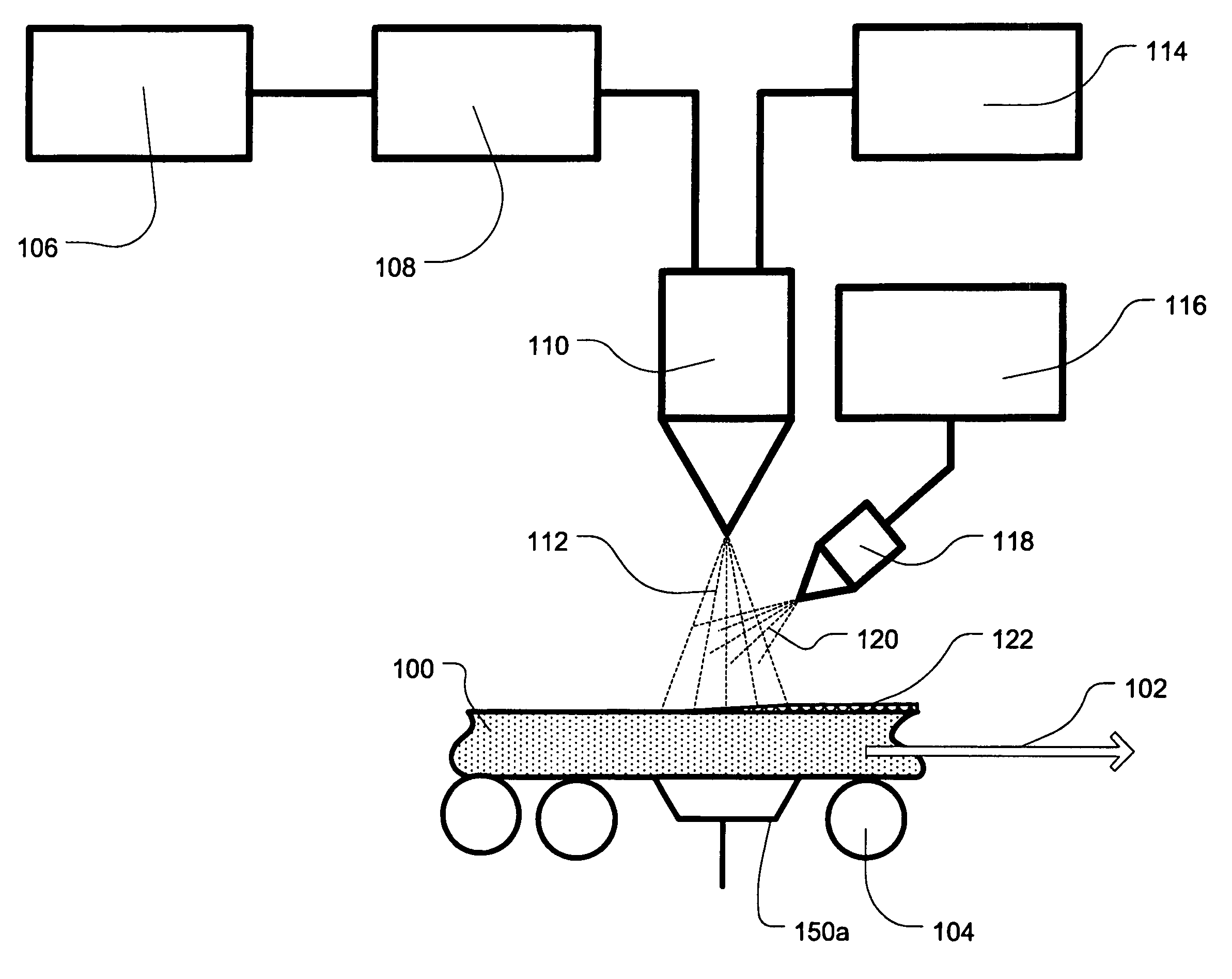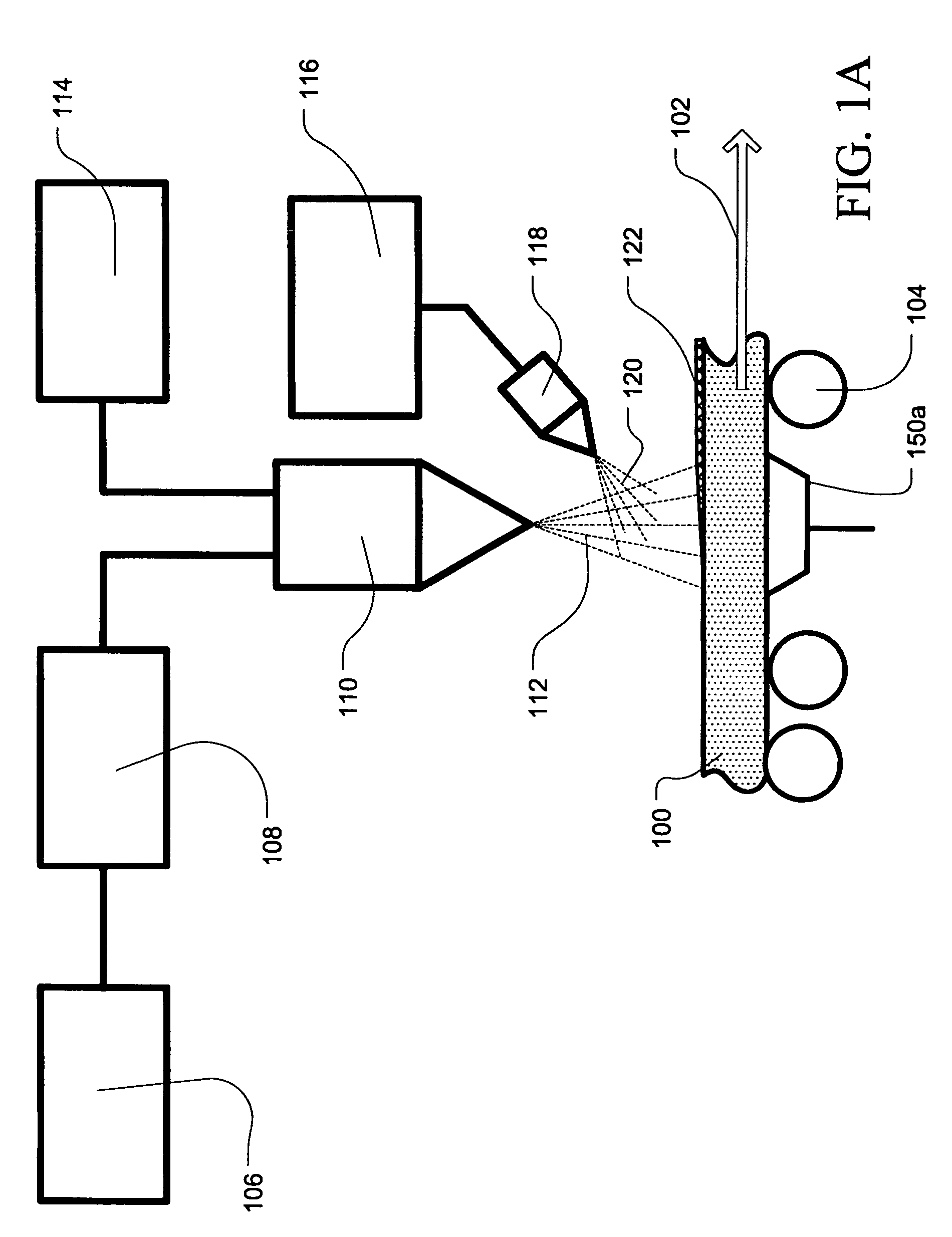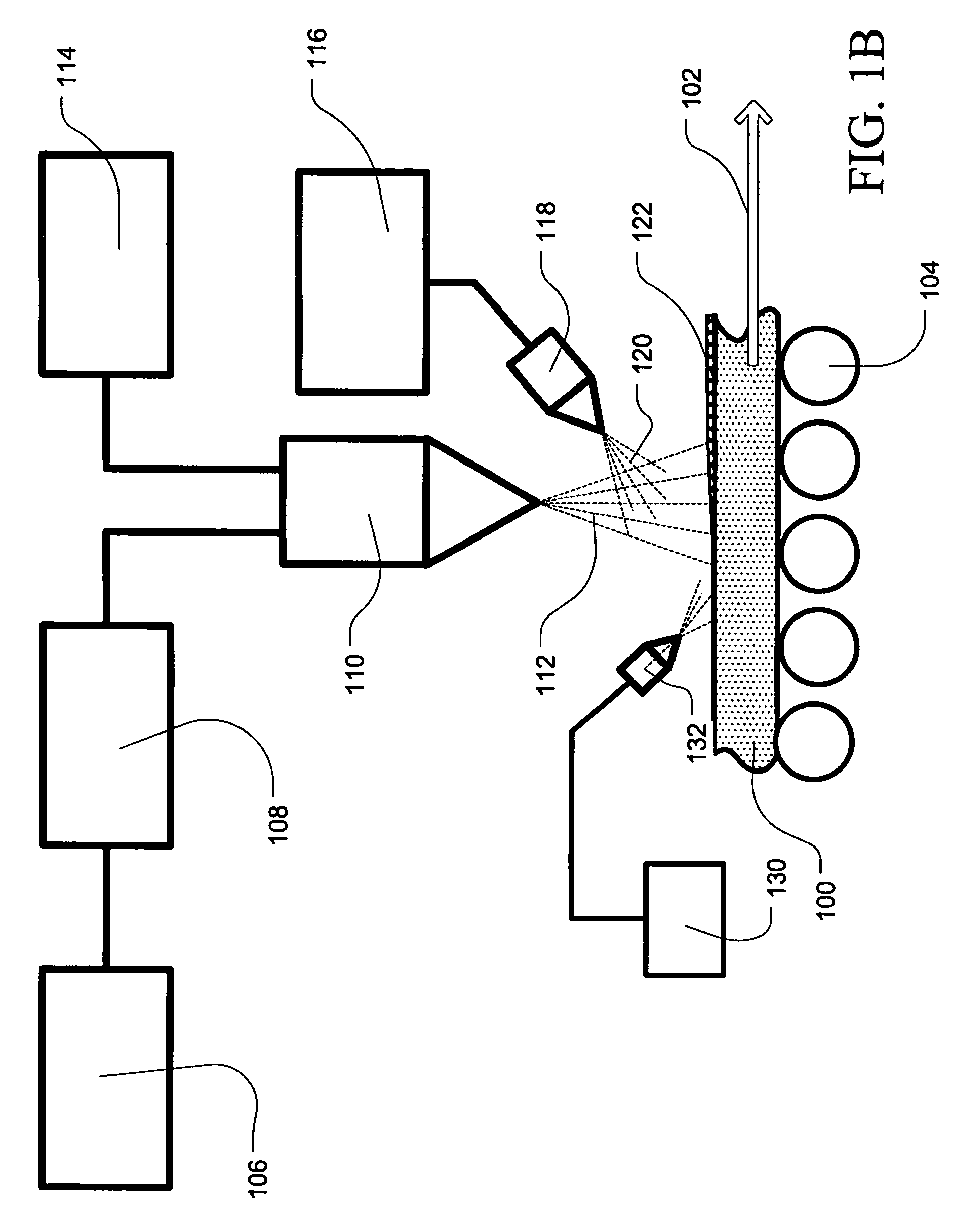Apparatus and method for fiber batt encapsulation
a fiber batt and encapsulation technology, applied in heat-proofing, natural mineral layered products, manufacturing tools, etc., can solve the problems of not being able to abruptly terminate or quickly vary particular heating processes, not being able to meet the design efficiency, and not being able to quickly change the heat treatment process, etc., to achieve good adhesion
- Summary
- Abstract
- Description
- Claims
- Application Information
AI Technical Summary
Benefits of technology
Problems solved by technology
Method used
Image
Examples
fifth embodiment
[0066]As illustrated in FIGS. 12F–G, a sixth exemplary embodiment of an apparatus for forming a polymer coating described above may be adapted to accommodate the coating of multiple fiber batts that utilize one of a variety of conveyor assemblies. Although generally corresponding to the fifth embodiment illustrated in FIGS. 12A–E, in this embodiment the minor surfaces of the adjacent batts are coated sequentially rather than generally simultaneously.
sixth embodiment
[0067]As illustrated in FIGS. 12H–I, a seventh exemplary embodiment of an apparatus for forming a polymer coating described above may be adapted to accommodate the coating of multiple fiber batts that utilize one of a variety of conveyor assemblies. Although generally corresponding to the sixth embodiment illustrated in FIGS. 12F–G, in this embodiment the minor surfaces of the adjacent batts are coated sequentially rather than generally simultaneously and, in addition, the direction of the rotation of the fiber batts is reversed before the second of the minor surfaces is coated to complete the encapsulation of the fiber batts. Although, as illustrated, the more upwardly facing minor surface of the fiber batt is being coated, it will be appreciated that the coating sequence may be reversed to limit the overspray onto the previously coated surfaces or provide other processing advantages.
[0068]As illustrated in FIG. 13A, an eighth exemplary embodiment of an apparatus for forming a poly...
PUM
| Property | Measurement | Unit |
|---|---|---|
| diameters | aaaaa | aaaaa |
| diameters | aaaaa | aaaaa |
| volume | aaaaa | aaaaa |
Abstract
Description
Claims
Application Information
 Login to View More
Login to View More - R&D
- Intellectual Property
- Life Sciences
- Materials
- Tech Scout
- Unparalleled Data Quality
- Higher Quality Content
- 60% Fewer Hallucinations
Browse by: Latest US Patents, China's latest patents, Technical Efficacy Thesaurus, Application Domain, Technology Topic, Popular Technical Reports.
© 2025 PatSnap. All rights reserved.Legal|Privacy policy|Modern Slavery Act Transparency Statement|Sitemap|About US| Contact US: help@patsnap.com



